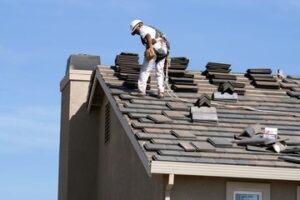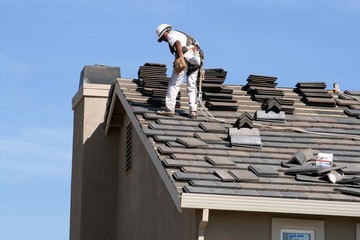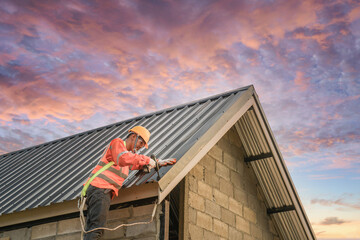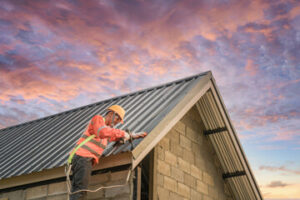The roof is an important part of a home and must protect against the weather. It is important to check it regularly for damage and repair.
A majority of leaks occur at the flashing, so this should be inspected closely. A roofing professional can re-caulk or replace the flashing to prevent leaking.
Roofing flashings are the metallic guardians that keep water from entering the roof at the seams and penetration points. They’re also prone to wear and tear, so it’s important for homeowners to look for signs of deterioration. If you notice any of the following problems, it may be time to call a professional roofer.
There are a few different types of flashing, but roofers choose the right one for each specific situation. For instance, base flashing consists of two sheets of metal that can move over each other as the roof expands and contracts, and it’s typically used around chimneys and other protrusions. On the other hand, kickout flashing — often called “diverter flashing” — prevents water intrusion into building structural components by directing it to the exterior.
Flashing is made of water-proof materials like copper, lead, galvanized steel, and aluminum. But even these high-quality materials are susceptible to wear and tear if not properly installed. That’s why it’s so important to have your roof flashing inspected regularly by a qualified home inspector.
The first sign of a problem with the flashing is the presence of rust spots or corrosion. These stains can be caused by water or the elements, leading to roof leaks. In some cases, they can even cause wood rot and other structural damage.
Other common flashing problems include gaps, looseness, or discoloration. Nails and screws attach the flashing to the roof and can wiggle loose over time. They should be checked periodically and tightened or replaced as needed. Additionally, flashing is sometimes exposed to sunlight, which can cause it to deteriorate or fade over time.
While it’s possible to repair some minor damage to flashing, most require complete replacement. This can be a messy job, and it’s best left to professionals who know how to properly remove the shingles and replace the flashing without causing further damage. This type of work can also help to identify other roofing problems that may be affecting your home. Contact us today to schedule a free inspection. We’ll help you determine if it’s time to call a professional roofer for repairs.
Inspect the Roof
A roof is one of the most important components of any home or commercial building. It protects the interior from weather and debris, and proper care and maintenance can ensure that it lasts for many years. A roof inspection can identify problems before they develop into serious problems requiring costly repairs.
During a home roof inspection, an inspector will first closely examine the shingles and other materials. They’ll look for signs of wear and tear, such as buckling, fading or sagging. They’ll also examine the shingles for signs of moisture, such as dark spots or moss, or water damage, such as mold and mildew.
Next, the inspector will check the flashing, which are the metal pieces that redirect water and keep it from getting into the structure. They’ll look for any cracks, gaps or rust and check around the chimney, dormers and vent pipes. If the flashing is damaged, water can seep into the house, causing rot in the interior and other issues.
In addition to looking at the shingles themselves, the inspector will examine the gutters and downspouts for any stains or damage. They’ll also check for a good level of attic insulation and ventilation, as this is essential for the longevity of the roof. Without proper ventilation, shingles can become damaged and rot can occur.
Depending on the type of roof, the inspector may have to get on a ladder to inspect some areas. If they use a ladder, the inspector will wear specialized safety equipment to ensure their protection. Once they’re on the roof, they’ll look for signs of sagging, uneven roof planes, or a loss of shingle granules. They’ll also look for any piles of leaves or debris that might retain moisture.
Once the exterior inspection is complete, the inspector will check the attic and interior walls for signs of a leaky roof. They’ll also look for any moisture stains or mold, which are sure signs that the roof’s integrity is compromised. If they notice any issues, they’ll write up a report and recommend any necessary repair work.
Inspect the Felt
Unlike roof tiles or shingles, roofing felt is made almost exclusively for use as a roof underlayment. The inspector will check that the right kind of roofing felt was used and that it was installed properly. There are different kinds of roofing felt, depending on the size of the project and the required fire rating. Using the wrong type of felt can compromise the roof’s structural integrity. It may also be a sign of rushed or inferior workmanship.


 Roofing can be tricky. Consider calling a roofing contractor. They
Roofing can be tricky. Consider calling a roofing contractor. They